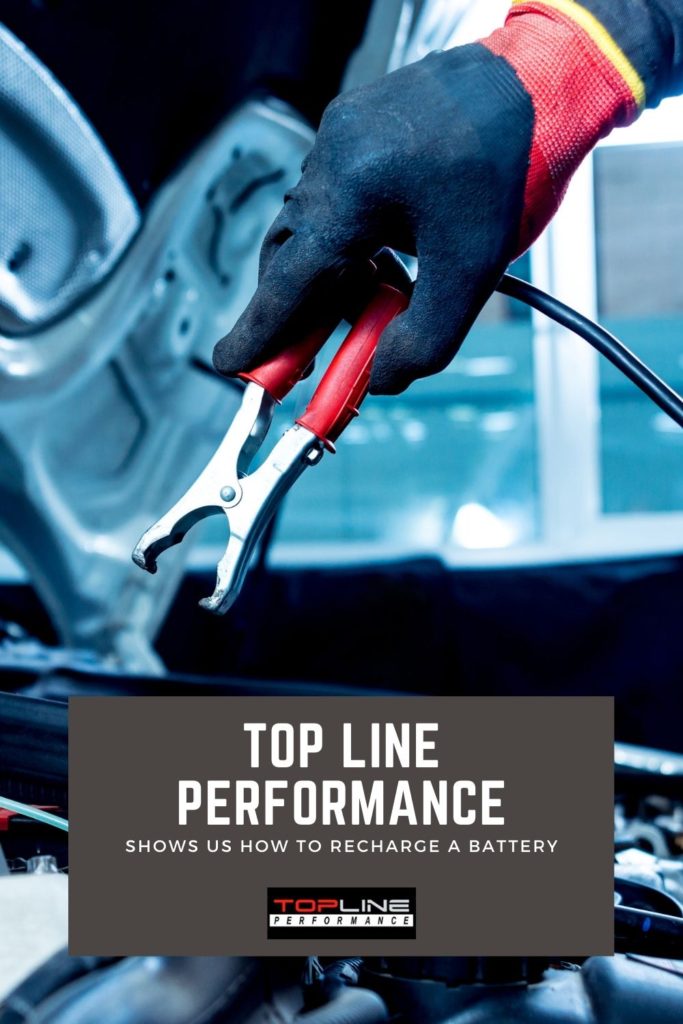Top Line Performance, an auto repair shop located in Huntington Beach, California, explains that charging a dead car battery is far more complex—and potentially hazardous—than charging your smartphone. Unlike a phone, you don't want to risk getting shocked or accidentally coming into contact with corrosive battery acid! Additionally, failing to recharge your battery fully could leave you stranded once again. That's why it's essential to read through this guide to learn the correct way to charge your car battery and ensure it gets sufficient time to charge properly.   Before diving into the process of recharging your car battery, it's crucial to understand its role in keeping your vehicle running smoothly. A car battery serves two primary purposes:   The battery delivers the necessary voltage to the starter motor, converting chemical energy into electrical energy to crank the engine.   While the alternator primarily powers your car while driving, the battery ensures consistent voltage delivery to critical systems like the radio, headlights, and onboard computers when the engine is off.  If your battery is weak or aged, it may fail to perform either of these tasks effectively. Signs that your battery needs recharging include sluggish starts or complete failure to start. Similarly, if leaving a dome light on overnight drains your battery entirely, a healthy battery should recover quickly after charging. Conversely, a battery requiring frequent recharging or unable to hold a charge may indicate it’s nearing the end of its life.   Once you grasp the basics of what your car battery does, it's time to prepare for the charging process. Here are some important steps to follow:   Different vehicles have unique specifications. Always check your manual for specific instructions related to your make and model.   Wear protective gloves and safety goggles during the charging process. Ensure the area is free of open flames, sparks, or smoke. Remove any jewelry as well, as metal objects pose a safety risk near electrical components.   If you notice a sulfuric smell resembling rotten eggs, your battery might be leaking dangerous gases. Avoid attempting to charge it and instead have the vehicle towed to a professional mechanic for inspection.   If the battery feels excessively hot, allow it to cool down before proceeding. Overheating indicates stress on the battery that could compromise safety.   Corrosion often appears as a greenish crust around battery terminals. This buildup hinders charging efficiency and poses risks to your vehicle's electrical system. Clean it gently using a mixture of water and baking soda applied with a brush until the terminals appear clean.   With your battery prepped and precautions taken, you're ready to charge it! Assuming you have access to a portable battery charger, here’s how to proceed:   Begin by ensuring both the charger and vehicle are turned off. Connect the red (positive) clamp to the positive terminal of the battery, followed by attaching the black (negative) clamp to a grounded part of the car's frame rather than the negative terminal itself. This reduces the risk of igniting hydrogen gas within the battery.   Adjust the charger settings according to the instructions provided. Lower amp settings provide a slower but safer charge, whereas higher amp settings offer faster results. Follow the guidelines in your owner’s manual to avoid damaging the battery.   Plug the charger into a power source if needed, then switch it on. Many chargers automatically shut off once the battery reaches full capacity, while others run for a predetermined amount of time. Be patient; charging takes time!   After charging, turn off the charger and disconnect it from the power source. Remove the clamps in reverse order—black first, then red—to prevent accidental sparking. If your battery still fails to hold a charge, consider visiting a trusted mechanic like those at Top Line Performance for further diagnosis.   Jiangsu Jiali New Material Technology Co., Ltd. , https://www.jlmaterial.com
Understanding What Your Car Battery Does
Purpose 1: Starting Power
Purpose 2: Electrical Support
Preparation Before Charging Your Battery
Consult Your Owner’s Manual
Safety First
Check For Leaks
Monitor Temperature
Address Corrosion
Using A Portable Battery Charger
Step 1: Attach The Charger
Step 2: Configure The Charger
Step 3: Turn On The Charger
Step 4: Disconnect Safely

An Auto Repair Shop In Huntington Beach Ca Shows Us How To Recharge A Battery
Water-based Aluminum Paste